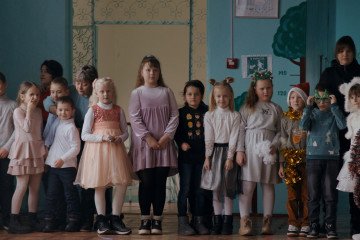Some have wondered about Ukraine’s religous identity, and how it may compare to those worldwide. Let this be your guide.
What religion is Ukraine?
The dominant religion in Ukraine is Eastern Orthodox Christianity. Although Ukraine has a sizable population of Muslims (500,000) and Jews (400,000) the majority of people identifying as Christians (85% of the religious population) follow the Eastern Orthodox denomination (72% of Christians).
In 1996, the All-Ukrainian Council of Churches and Religious Organizations (UCCRO) was established with the ambitious goal of unifying the major religious denominations in Ukraine. Today, the UCCRO represents 90% of all religious communities in the country.
This unitarian organization brings together a diverse array of religious traditions, including Orthodox, Greek and Roman Catholic, Protestant, and Evangelical churches, as well as Jewish and Muslim religious unions. By maintaining cooperation among the various faiths, the UCCRO addresses greater crucial spiritual, social, and legislative issues for Ukraine’s religious population.
Before Orthodoxy
In the 9th century, before the creation of the Kyivan Rus, the territory of modern Ukraine was a loose tribal confederation with various polytheistic Slavic paganistic beliefs. Some of these groups include:
Polans (Poliany): The tribe that inhabited the area around modern Kyiv. (They were instrumental in the formation of the early Kyivan state)
Drevlians: A tribe located in the forested areas west of the Polans.
Severians: Inhabiting the northeastern part of the region.
In the late 9th century, the Varangians (Scandinavian Vikings) traveled to Ukraine through the Dnieper River and ultimately settled there. They took control of the various tribes and established the foundations for what would become the Kyivan Rus.
There was a remarkable period of coexistence between the Scandinavian settlers (Norse pagans) and the local tribes (Slavic pagans). The Varangians did not impose any religious reforms, and the two groups benefited from a strong cultural exchange. The mix of Slavic and Norse paganism would be the last polytheistic religious majority in the Ukrainian region before the adoption of Christianity.
Kyiv’s Baptism
Prince Volodymyr “The Great” was in search of a new religion to help strengthen and consolidate his state, he went on numerous pilgrimages; but eventually settled on Christianity. By choosing so, he had developed strong ties with the Byzantine Empire, one of the most powerful entities at the time. Volodymyr would consolidate his power by marrying Anna Porphyrogenita, the sister of Byzantine Emperor Basil II.
The baptism of Prince Volodymyr would take place in Chersonesus (modern-day Sevastopol) in Crimea, the event would be known as the Baptism of Kyiv. Following his conversion, Volodymyr ordered the Christianization of his people, destroyed pagan idols, and mandated the mass baptism of the inhabitants of Kyiv in the Dnieper River – symbolizing the official adoption of Christianity as the state religion.
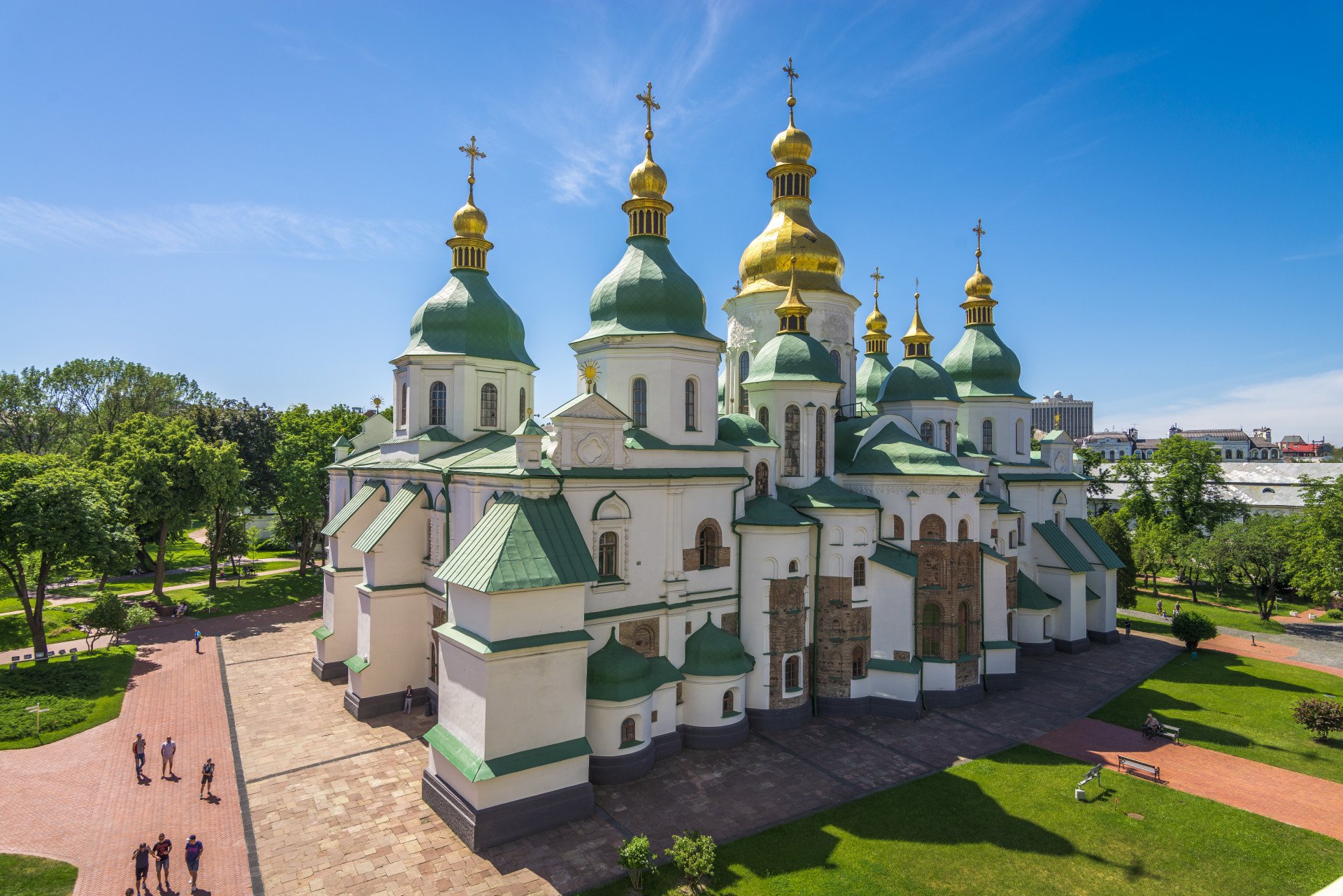
Churches
After the official adoption of Christianity, the process of establishing churches and monasteries began. Many churches were built, but among the most famous were the St. Sophia Cathedral and the Kyiv Pechersk Lavra. Both sites are UNESCO World Heritage Sites.
Standing in Kyiv’s historic center, the St. Sophia Cathedral (constructed in 1037 AD), became the center of religious activity in Kyivan Rus and the burial site for Kyivan princes. The name "Sophia" was a nod to the Hagia Sophia in Constantinople, greatly influencing Prince Yaroslav “The Wise”. St. Sophia is one of Ukraine’s oldest standing buildings.
The Kyiv Pechersk Lavra, also known as the Kyiv Monastery of the Caves (founded in 1051 AD) by monks Antony and Theodosius, is a historic Orthodox Christian monastery that played a crucial role in the spread of Christianity in the region. The monastery includes an underground cave system where monks lived and were buried. The Kyiv Pechersk Lavra remains an active center of Eastern Orthodox Christianity to this day.
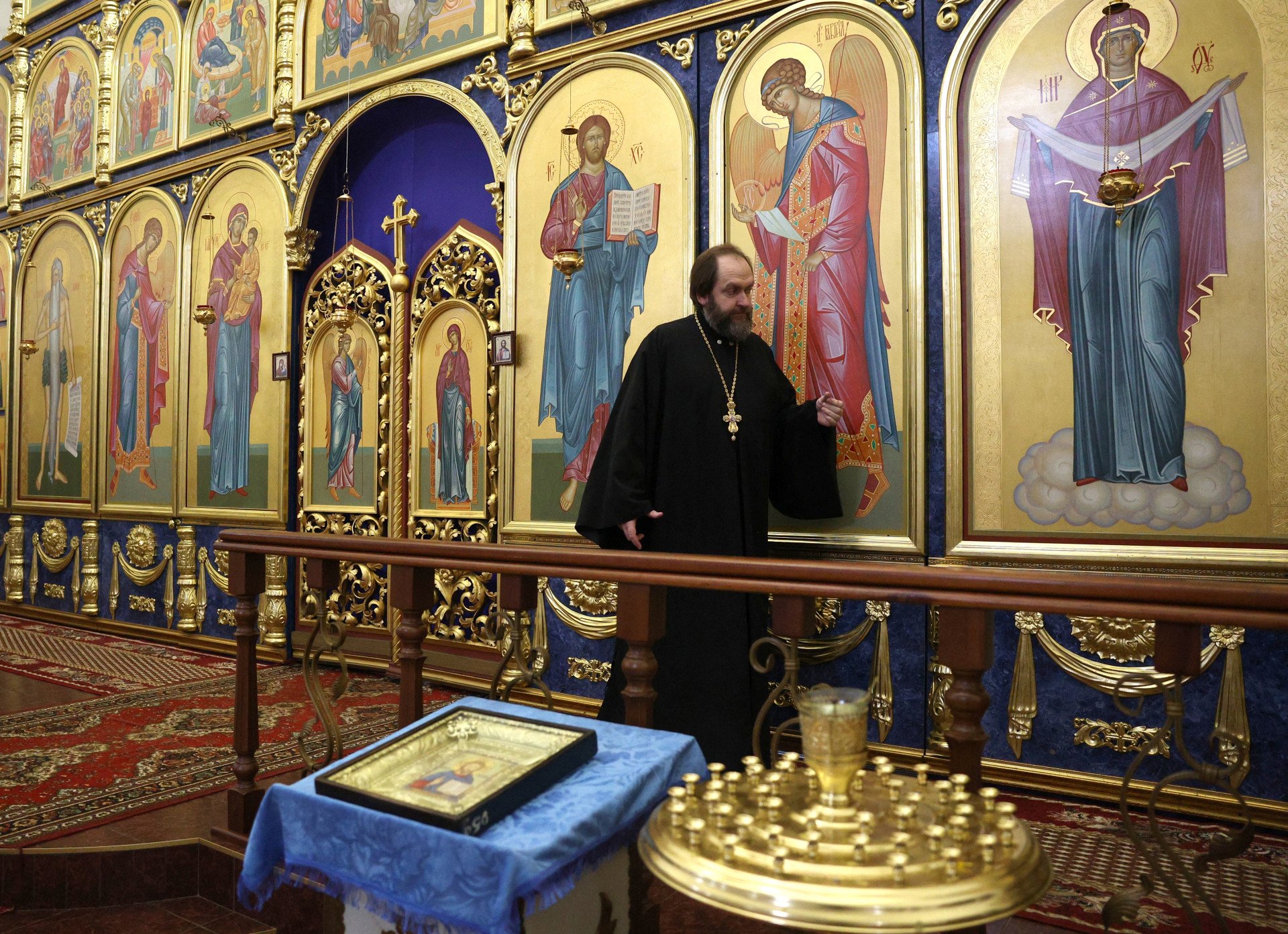
Eastern and Western rites of Christianity
Christianity in Ukraine encompasses both Eastern and Western rites (traditional frameworks). The Eastern Orthodox Church has been predominant since the Baptism of Kyivan Rus in 988 AD when Christianity was first adopted from the unified Christian Church before the Great Schism of 1054. In the 15th century, a significant event occurred: the Union of Brest in 1596. This union brought about the formation of the Ukrainian Greek Catholic Church, which practices the Byzantine rite but is in communion with the Roman Catholic Church.
The Union of Brest was a significant event in the history of Christianity in Ukraine. It established the Ukrainian Greek Catholic Church, which follows the Byzantine rite but acknowledges the authority of the Pope in Rome. This union created a unique clerical body that would be responsible for the convergence of Eastern and Western Christian traditions.
The Greek Catholic Church represents the Western Rite of Christianity in Ukraine. Despite theological differences, both rites have coexisted in Ukraine, reflecting the country’s complex religious and cultural history. This coexistence is similar to that of Pagan times and is evident in the diverse religious practices through the mutual presence of Orthodox and Greek Catholic churches throughout Ukraine.
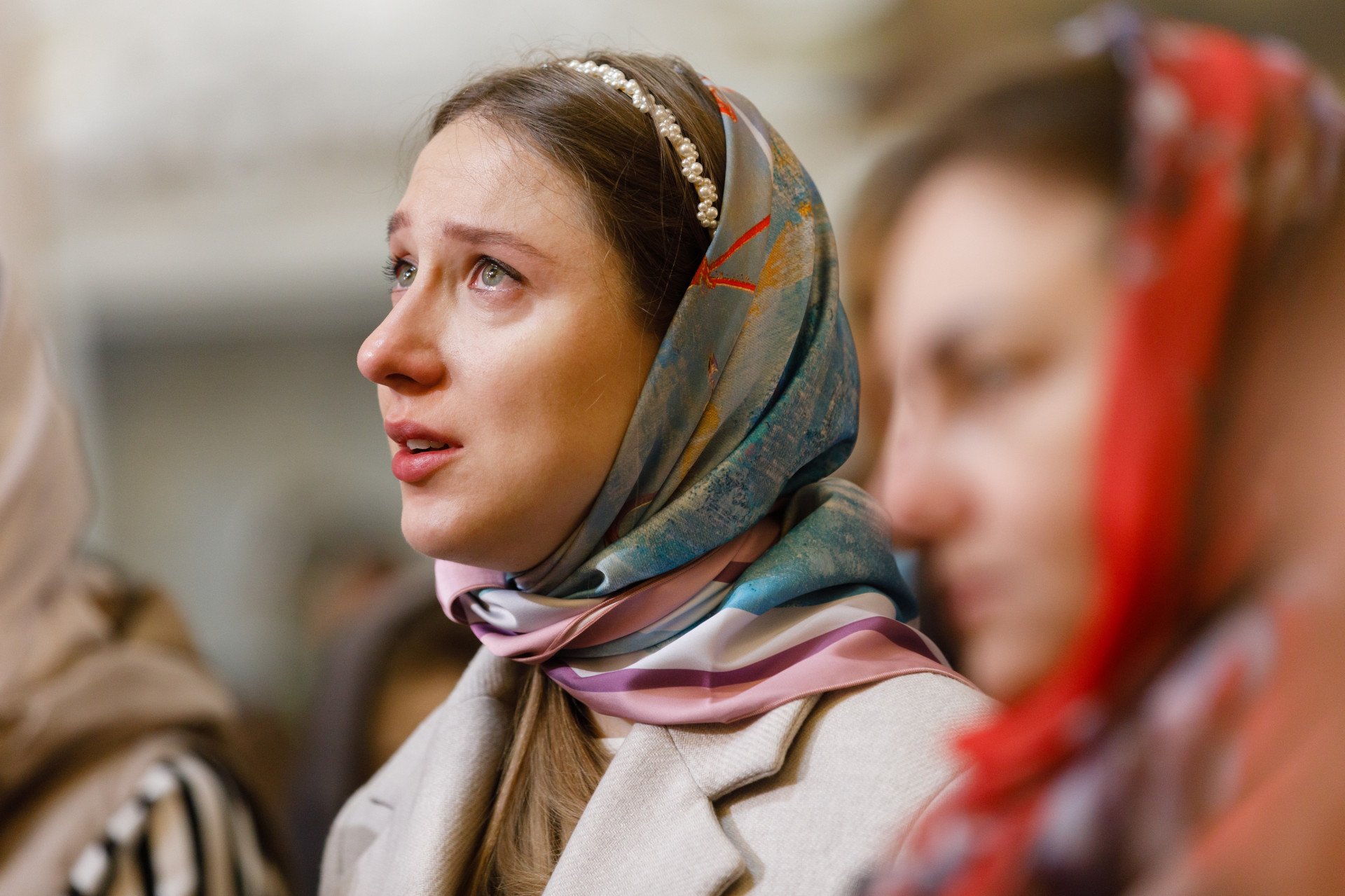
Modern Ukrainian Christianity
Contemporary Ukraine is a tolerant religious state characterized by a significant Eastern Orthodox majority and a clear separation of church and state. According to data from the Kyiv International Institute of Sociology (KIIS), of Ukraine's pre-war population of 44 million, approximately 34 million people identify as Christian.
Among these Christians, 72%, or about 25 million individuals, identify as Eastern Orthodox, making up more than half of the country's population. Additionally, 8% identify as Greek Catholic, 1% as Roman Catholic, and 2% as other Christian denominations, including Jehovah's Witnesses. Although Ukraine is a majority Eastern Orthodox country
Holidays and Traditions
Of Ukraine’s 11 public holidays, three are religious holidays that reflect the country's rich Christian traditions. These include Christmas Day on December 25th, following Western Christian traditions, as well as Orthodox Easter and Orthodox Pentecost, which follow the Orthodox calendar.
Christmas Day - Ukrainians celebrate with festive meals, caroling, and the decoration of homes with intricate nativity scenes.
Orthodox Easter - Beginning with a midnight church service, where the Holy Fire is passed among the congregation, symbolizing the resurrection of Christ. Traditional customs include painting pysanka eggs with intricate designs, which are blessed in church and later exchanged as symbols of new life and prosperity.
Orthodox Pentecost - celebrated 49 days after Easter, includes attending special church services adorned with green branches and flowers, symbolizing the Holy Spirit and the renewal of nature.
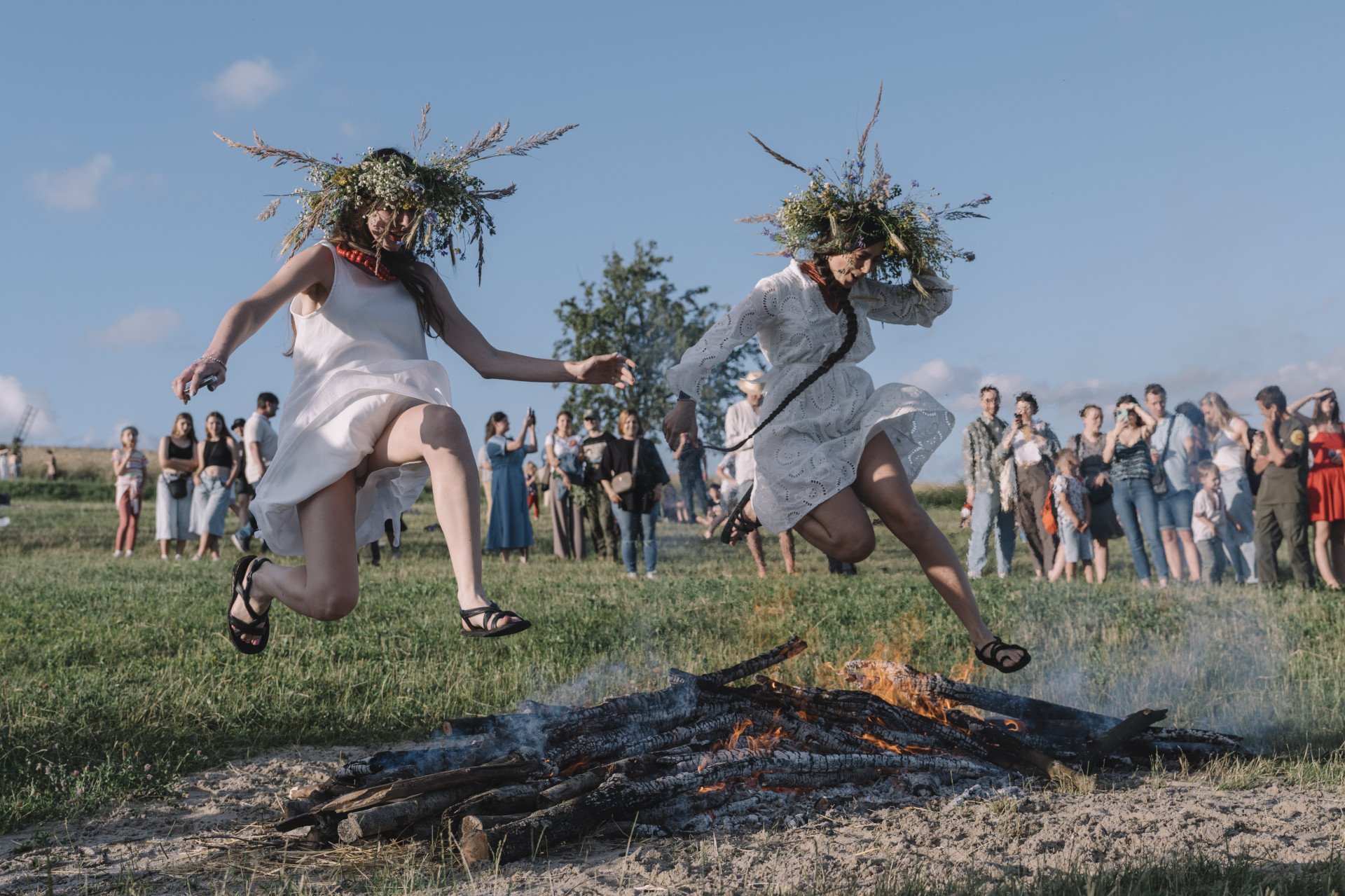
These holidays are significant periods of unity for Ukrainians, marked by special services, traditional customs, and community celebrations. Although there are many more unofficial holidays in Ukraine, which include:
Koliada (January 6th) - a traditional time during winter for friends or strangers to gather take to the streets and knock on the neighbors’ doors to sing carols to them.
Vodokhreshche (January 19th): Many Ukrainians participate in the tradition of swimming in ice-cold water to commemorate the baptism of Jesus in the Jordan River. This act is believed to purify the soul and body.
Ivana Kupala (July 6-7): Formerly an ancient pagan festival, it is now intertwined with Christian traditions and involves jumping over bonfires, which is believed to cleanse participants of sins and bring good luck. The festival also includes singing, dancing, and weaving flower crowns.

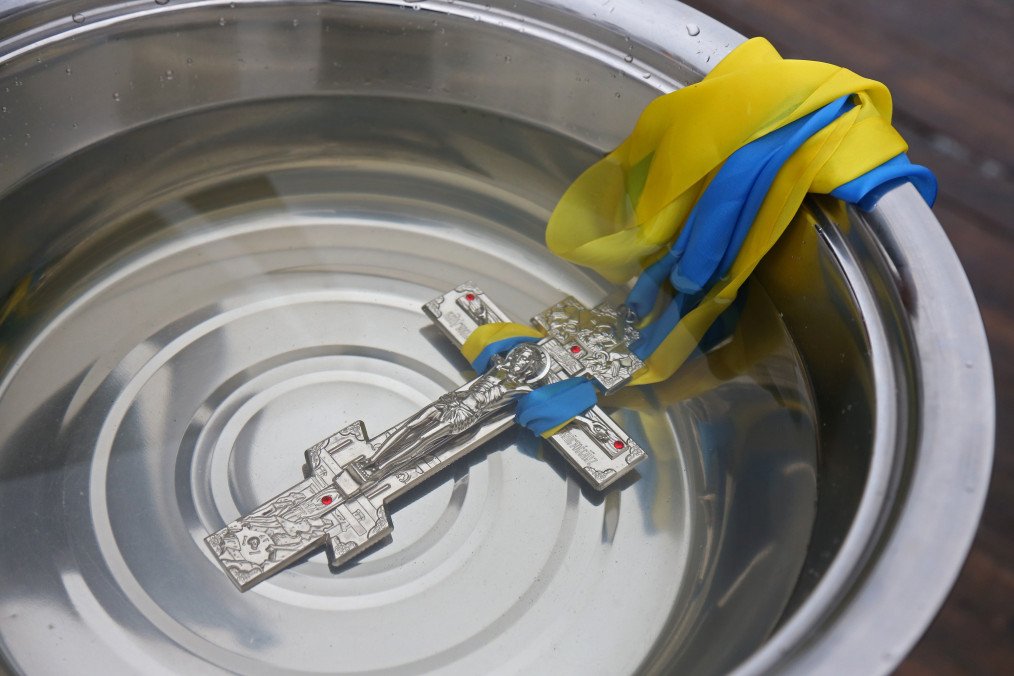
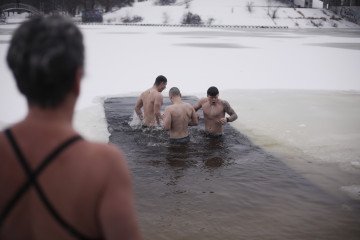
-554f0711f15a880af68b2550a739eee4.jpg)
-3f32748f66f2315d221d5623d88a1687.jpg)


